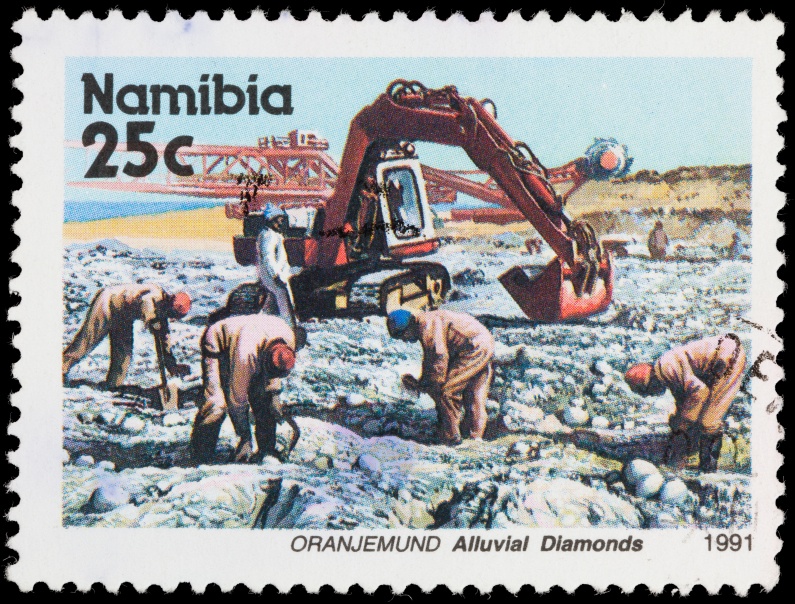
For diamond jewelers in today’s market, knowing the source of their diamonds is an invaluable sales tool. Knowing where diamonds originate influences socially conscious consumers in their decision of what to buy and where to buy. No one wants to declare love with a blood diamond.
The Rise of Consumer Awareness
Diamond jewelry customers are growing more conscious of global issues and are demanding that diamond manufacturers and jewelry retailers act responsibly in the production of their goods and services. Socially responsible companies see higher sales while boycotts and protests may hinder the non-socially responsible. In fact, on average, customers will pay 10% more for goods with conscientious social or environmental values.
The 2006 blockbuster movie Blood Diamond made consumers aware of conflict diamonds internationally. Humanitarian groups joined the clamor, railing against the diamond industry and its “unethical policies,” claiming that diamond miners, cutters, polishers, and retailers were all getting rich off the suffering of others. The World Diamond Council quickly countered with its own campaign, including full-page newspaper ads and a website, DiamondFacts.org, to assure consumers of the industry’s zero tolerance policy for blood diamonds. They were also quick to demonstrate the positive effects of the diamond industry on the countries where they are sourced (employment, education, healthcare, etc.). Martin Rapaport explains that “diamonds provide an important lifeline for the people of West Africa because their economy revolves around the diamond trade. Despite the civil rights violations in Sierra Leone, for example, the country depends on its diamonds, and a boycott would have severe ramifications on the local innocents.“
What are Conflict (or “Blood”) Diamonds?
Conflict diamonds, also known as blood diamonds, are diamonds that are used to finance conflict, civil wars, and human rights violations in war-torn areas, particularly in Central and Western Africa. Since 1998, the United Nations has recognized African blood diamonds as a source of funding for African civil wars. Profits from the illicit trade are often used by warlords and rebels to buy arms, particularly in Angola, the Democratic Republic of Congo, Liberia, and Sierra Leone.
Diamond jewelry retailers must be at least as knowledgeable and concerned about blood diamonds as their customers. Customers want confirmation that their jewelry was manufactured ethically, from the mine to the finished piece. Retailers must therefore also establish and adhere to a written company policy regarding conflict diamonds, and provide certification to that effect with each purchase.
Fair Trade Policies, the Kimberley Process, and the System of Warranties
“Fair trade” means different things to different people, depending on the industry. According to a basic Merriam-Webster definition, it means the movement that helps “producers in developing countries to get a fair price for their products so as to reduce poverty, provide for the ethical treatment of workers and farmers, and promote environmentally sustainable practices.”
When it comes to diamonds, there are four criteria that must be met to be considered fair trade, according to the Rapaport Fair Trade Organization:
- All workers must receive fair wages.
- The community near the mine must benefit from the diamond industry’s activities there.
- All people must be able to continue living near the mine as they had prior to the diamond excavations, all labor laws must be upheld, and no diamond merchant can aid conflict or violence.
- Mining and production sites must be monitored by impartial parties.
The Kimberley Process
The Kimberley Process was established in Kimberley, South Africa, in May 2000, when diamond merchants met to brainstorm ways to stop trade in conflict diamonds.
In December 2000, the United Nations General Assembly adopted a resolution supporting the creation of an international certification scheme for rough diamonds (the Kimberly Process Certification Scheme (KPCS)). The KPCS document sets out the requirements for controlling diamond mining and trade. The Kimberley Process has 54 participants, representing 81 countries.
The System of Warranties
In addition to the Kimberley Process, the System of Warranties was developed by the World Diamond Council to assure consumers that their diamonds are from conflict free sources. On the invoice accompanying every transaction of polished diamonds, from mining to diamond jewelry retailer, a declaration is made that the diamonds are “not involved in funding conflict and are in compliance with United Nations resolutions.”
Location of Mines around the World
Natural diamond sources are found in approximately 35 different countries around the world, including Africa, Australia, Borneo, Canada, India, and Russia.
Advertising your commitment to the Kimberley Process and the System of Warranties, and making it a part of your sales pitch, will improve customer trust, lead to referrals, and ultimately, increase sales with the socially conscious customers of today. It is important to become knowledgeable of the facts and ensure that all your diamonds come from an ethical source. In addition to the benefits of being ethically responsible, this support will also be an invaluable sales tool.


 RapNet Blog
RapNet Blog





